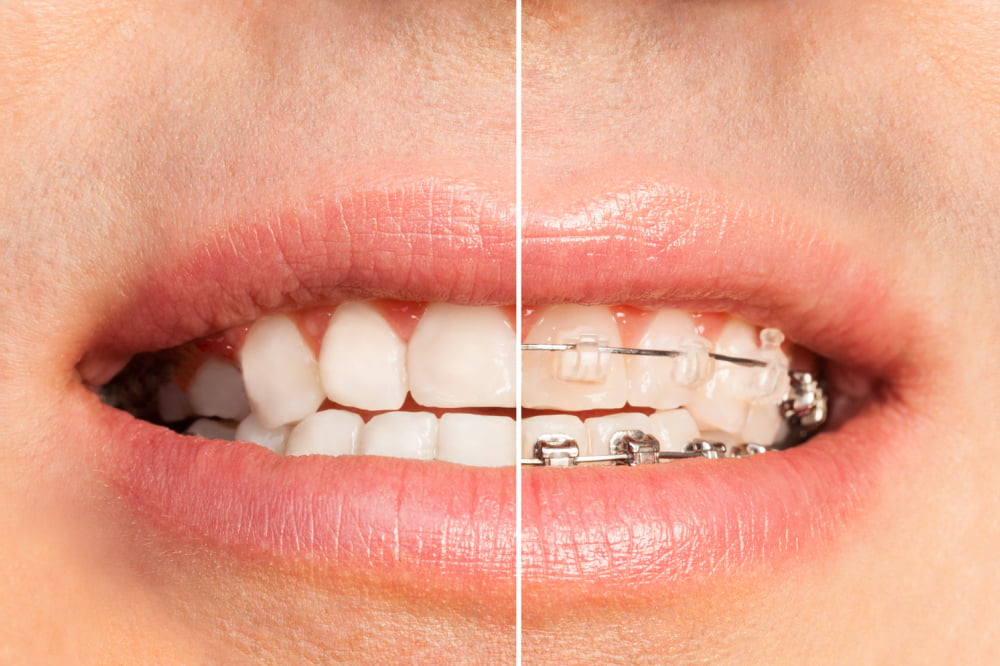
Dental braces – Types, cost, and insurance coverage
An essential part of health and personal care is oral health, which can be maintained and improved by practicing good oral hygiene and setting up regular appointments with the dentist. While such measures can keep teeth- and gum-related issues at bay, to address problems with the alignment and appearance of teeth, like crooked, crowded, gapped, or rotated teeth, one may have to consider dental braces. Here is what one should know:
Types of dental braces
A dentist might recommend various types of braces depending on factors like the type of issue, severity of the condition, and personal preferences. Here are some of the most common types of braces:
Metal braces: Metal braces are traditional options with stainless steel bands, wires, and brackets to shift teeth gradually and gently over time. Here, dentists or orthodontists glue a bracket on each tooth and then place a thin, flexible archwire over the brackets. They also use ligatures (elastic bands) to keep the wire in place. One can choose brightly colored ligatures if they want. Metal braces can be easily seen while smiling, so high visibility is a common concern when considering the types of braces. However, other less noticeable options are discussed in the following sections.
Ceramic braces: Also known as clear braces, this type works just like metal braces. The notable difference is that the wires, ligatures, and brackets are tooth-colored to make them blend with the teeth. While ceramic braces are still visible, they are less noticeable than their metal counterparts. A caveat here is that they are delicate dental tools, which makes them more susceptible to damage or breakage.
Lingual braces: Although they follow the same mechanism as traditional braces, unlike metal ones, lingual braces are installed on the back of the teeth instead of the front. Usually, one may choose this type to keep the braces hidden.
Self-ligating braces: Like metal braces, self-ligating braces use wires and brackets to align teeth. However, self-ligating braces, as the name suggests, come with a built-in system to hold the archwire in place instead of using tiny bands.
Clear aligners: Also called invisible braces, clear aligners are great alternatives to braces. Rather than visible metal wires and brackets, this type uses a series of custom-made trays to straighten teeth over time. Here, one wears each set of aligner trays for about two weeks, following which the trays are swapped for a new set. In addition to being transparent, another advantage of clear aligners is that they are removable. However, one should wear them every day for at least 22 hours to get the best results. Dentists usually insist that the aligners are removed while drinking, eating, or brushing the teeth.
Cost
The price of braces may be anywhere from $3,000 to over $10,000, depending on the type chosen. This cost may also differ based on where one lives, whether their teeth need heavy correction, and if they want braces to be less noticeable. For a rough idea, a recent survey showed that the average listed price of comprehensive orthodontic treatment, including braces, was between $5,000 and $6,000. The cost of aligners might also be similar to those of braces and will differ based on the brand and type one gets.
Insurance coverage
One should note that most dental insurance companies may not cover the cost of braces for adults. However, some providers may offer an add-on orthodontic insurance plan that may include coverage for such orthodontic procedures. The provider may fully or partially cover the cost if the braces are deemed medically necessary for the policyholder’s well-being by an expert. Most dental insurance providers will cover at least a partial cost of the braces for those under 18 if the braces are deemed necessary by a dentist to improve the child’s health. This coverage is usually limited to traditional metal braces. However, those who choose more expensive options might have to pay the difference in cost themselves.
Additionally, those considering Medicaid coverage for braces should note that coverage differs from one state to another. There are certain minimum requirements here. The rules require all states to offer coverage for dental treatment to relieve infection and pain, teeth restorations, and orthodontic services required to improve the child’s overall health. Other states might offer coverage to adults.
Dental braces not only aim to improve the appearance of teeth, they also help restore functions like chewing and speaking when dealing with misaligned teeth. However, before making a decision, it is essential to consult a dentist regarding the most suitable braces and discuss the risks and benefits of each type.




